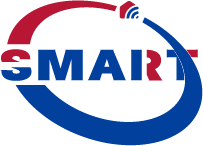On May 12, 2025, Sino-US trade ushered in a historic turning point.Industrial moving packaging wrapping film The United States officially announced that it would cancel 91% of the tariffs imposed on Chinese goods from the original plan, and at the same time suspend the implementation of 24% counter-tariffs. This policy adjustment directly pushed the US tariff down from a high level to 30%, and China also simultaneously canceled its counter-measures against US goods. This not only pressed the pause button for the Sino-US tariff game, but also injected a shot of adrenaline into the cross-border e-commerce industry.
1. US tariff adjustment: a double signal for the cross-border industry
The core of this tariff adjustment is to reduce the burden and buffer. Industrial moving packaging wrapping film According to the policy, 91% of the tariffs imposed by the United States on Chinese goods were canceled, and the remaining 10% were temporarily retained; China simultaneously canceled 91% of the counter-tariffs on US goods, and set a 90-day buffer period for the 24% tariff. This change sends two major signals:
1. Direct cost reduction: The reduction in tariffs directly reduces the cost of entry of goods, and the financial pressure on sellers in the first-leg transportation, tariff declaration and other links is relieved.
2. Policy uncertainty remains:High quality three proof thermal paper Paper edge corner protector machine Industrial moving packaging wrapping film The 10% tariff and 90-day buffer period that are retained mean that companies need to establish a more flexible cost-sharing mechanism to cope with possible tax rate fluctuations in the future.
For cross-border sellers, this is not only an opportunity to reduce logistics costs, but also a test of refined operational capabilities.
2. Refined operational challenges behind tariff reductions
Although the adjustment of China-US tariffs has brought benefits, cross-border sellers still face practical challenges:
1. The allocation of first-leg costs is chaotic, and hidden profit losses are difficult to detect
The same batch of goods contains multiple SKUs.High quality three proof thermal paper Paper edge corner protector machine Industrial moving packaging wrapping film Should the first-leg freight and tariffs be allocated by volume weight, actual weight or value? Manual calculations are prone to errors, resulting in inflated costs for some SKUs.
2. Multiple batches of costs are mixed, and financial reconciliation is time-consuming and labor-intensive
Fluctuations in purchase prices of different batches and differences in first-leg freight lead to uneven costs for the same SKU in different warehouses;
Financial manual verification of purchase orders, warehousing orders, and logistics bills is inefficient and prone to missing abnormal data.
3. Profit black holes are difficult to locate
Platform fees, FBA operating fees, refund costs, etc.High quality three proof thermal paper Paper edge corner protector machine are scattered in multiple reports, making it impossible to quickly locate loss-making orders;
Some sellers did not calculate the cost of re-issuing orders, and their actual net profit was 8%-12% lower than the estimate.
3. Cross-border e-commerce ERP:Paper edge corner protector machine Accurately disassemble tariff costs and lock in profit red lines
In response to the above pain points, professional cross-border e-commerce ERP (Eicang ERP) helps sellers achieve cost transparency and maximize profits through three core functions

